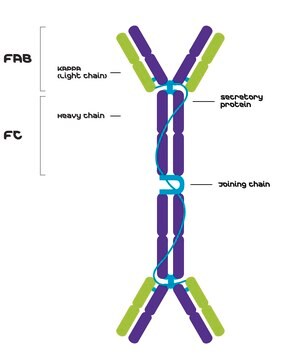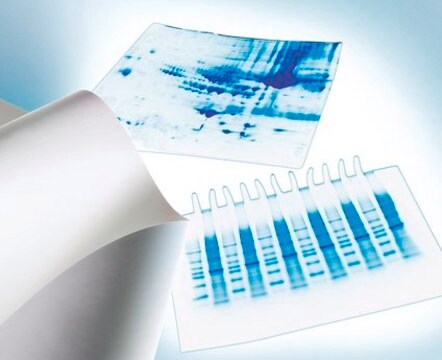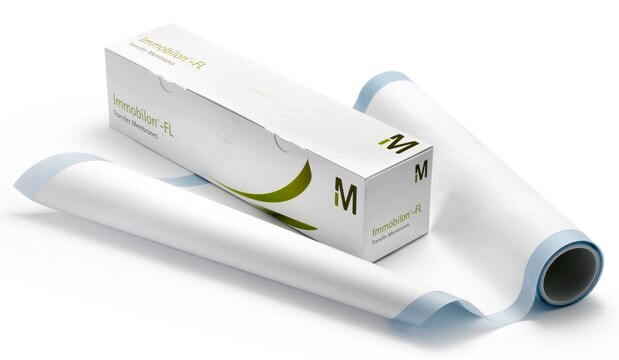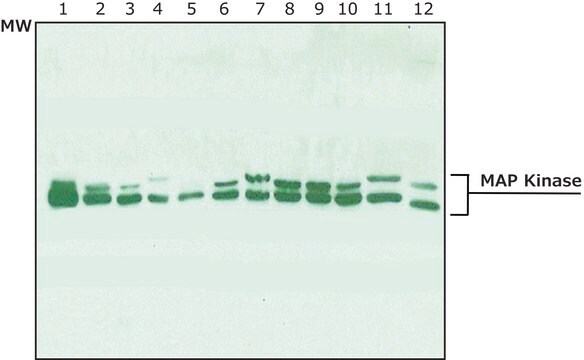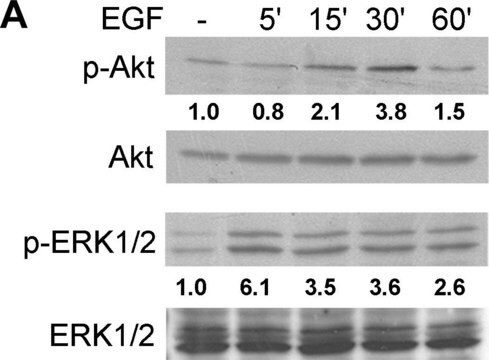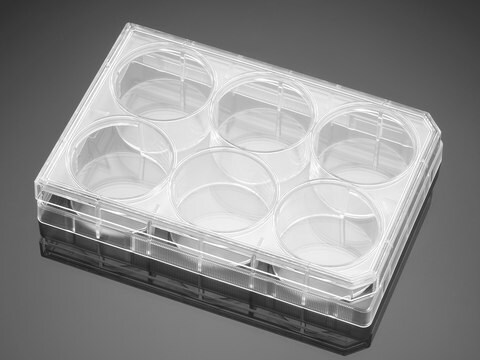MABF2084
Anti-Phosphorylcholine Antibody, clone BH8
clone BH8, from mouse
Synonym(e):
PC, ChoP
About This Item
Empfohlene Produkte
Biologische Quelle
mouse
Antikörperform
purified immunoglobulin
Antikörper-Produkttyp
primary antibodies
Klon
BH8, monoclonal
Speziesreaktivität (Voraussage durch Homologie)
all
Methode(n)
ELISA: suitable
flow cytometry: suitable
immunocytochemistry: suitable
western blot: suitable
Isotyp
IgMκ
Posttranslationale Modifikation Target
unmodified
Allgemeine Beschreibung
Spezifität
Immunogen
Anwendung
Entzündung & Immunologie
Inhibits Activity/Function Analysis: A representative lot inhibited lung-resident APC activation and diminished the infiltration of allergy-associated cells into the pulmonary parenchyma in mice. (Patel, P.S., et. al. (2015). J Immunol. 194(12):5838-50).
ELISA Analysis: A representative lot detected Phosphorylcholine in ELISA applications (Ansel, K.M., et. al. (2002). Immunity. 16(1):67-76).
Flow Cytometry Analysis: A representative lot detected Phosphorylcholine in Flow Cytometry applications (Patel, P.S., et. al. (2015). J. Immunol. 194(12):5838-50).
Immunocytochemistry Analysis: A representative lot detected Phosphorylcholine in Immunocytochemistry applications (Patel, P.S., et. al. (2015). J. Immunol. 194(12):5838-50).
Qualität
Western Blotting Analysis: A 1:250 dilution of this antibody detected Phosphorylcholine-BSA conjugate.
Zielbeschreibung
Physikalische Form
Lagerung und Haltbarkeit
Sonstige Hinweise
Haftungsausschluss
Sie haben nicht das passende Produkt gefunden?
Probieren Sie unser Produkt-Auswahlhilfe. aus.
Analysenzertifikate (COA)
Suchen Sie nach Analysenzertifikate (COA), indem Sie die Lot-/Chargennummer des Produkts eingeben. Lot- und Chargennummern sind auf dem Produktetikett hinter den Wörtern ‘Lot’ oder ‘Batch’ (Lot oder Charge) zu finden.
Besitzen Sie dieses Produkt bereits?
In der Dokumentenbibliothek finden Sie die Dokumentation zu den Produkten, die Sie kürzlich erworben haben.
Unser Team von Wissenschaftlern verfügt über Erfahrung in allen Forschungsbereichen einschließlich Life Science, Materialwissenschaften, chemischer Synthese, Chromatographie, Analytik und vielen mehr..
Setzen Sie sich mit dem technischen Dienst in Verbindung.
